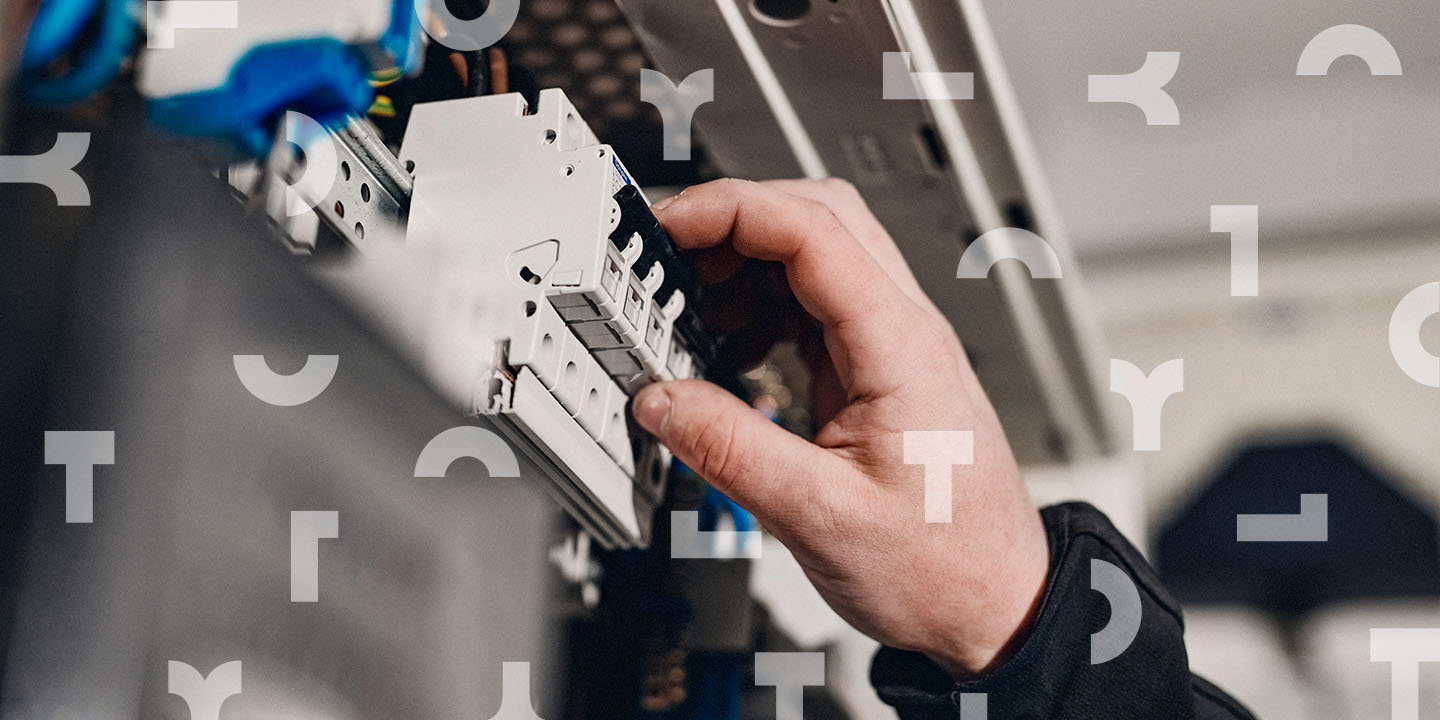How to reduce your CO2 footprint
Six electrical solutions in and around buildings that will help reduce energy consumption and cut down on CO2 emissions
Apart from agriculture, by far the most emissions of greenhouse gases are caused by transport and buildings (residential and commercial). We need energy to for example heat our homes and offices, to run our appliances, to heat our water. It stands to reason that one of the most powerful levers for reducing global warming emissions is right at where we work, live and consume: in the buildings. Below, we have listed the six most important levers, that will help you reduce energy consumption and with that cut down your CO2 footprint – whether for a residential, industrial or commercial building.
1) Energy Management Systems
Smart meters and open interfaces help devices to communicate and always choose the most efficient mode of operation or enable home owners and those who are managing buildings to keep track of energy usage and saving potentials on a real-time basis. The consumption can be broken down to rooms, entire parts of a building or to device-level. This enables the user to identify energy hogs or behavioural weaknesses and optimise energy consumption right away. There are many manufacturerer brands, such as hager, offering solutions for private households as well as complex office buildings or distribution centers.
2) Smart home solutions
For many years we have been making steady progress into smarter homes which help consumers save energy and cut greenhouse gas emissions at every step. These solutions have also proven to make our industrial and commercial buildings more efficient. Movement and presence sensors, constant lighting controls and dimmer switches achieve noticeable reductions in energy consumption for lighting. Single-room thermostats and automatic controls for blinds and shutters reduce the level of energy used for heating and cooling considerably. In particular, energy can be saved by using a central control for electronic devices.
3) Renewable Energy
Savings of up to 50% are possible whilst maximising convenience and security at the same time. And this is just the beginning as far as we are concerned: the ongoing decentralisation of the grid is one important step in the right direction: In Germany alone, we have shifted from about 70 central power stations feeding the grid to over 2 Million individual prosumers i.e. consumers which produce their own electricity. Mostly they use solar panels on roofs to generate electricity which is used to run the house and to charging an electric vehicle (EV)
4) Power storage for solar energy
As we shift to renewable energy sources such as solar, we have to acknowledge one weakness: the sun isn’t always shining, and wind doesn’t always blow. However, power storing solutions, such as for example from E3/DC and other producers are increasingly popular. They allow homeowners as well as commercial users of buildings to increase their self-sufficiency. Solar energy produced in sunny periods can be saved and help bridge challenging periods, such as at night or on rainy days.
5) Electrical Vehicles for lower CO2 emissions in the long-run
Charging EVs is an important part of the sustainable living puzzle. Whilst public transport is always going to be the most CO2-efficient mode of getting from A to B if we discount walking and cycling, running private or shared vehicles on electricity generated from renewable energy sources is the key to zero-emission transportation.
6) Bidirectional charging
In the near future, car batteries will serve as mobile energy storage systems. A car battery has ten times the storage capacity of a common power storage station and thus has huge potential to answer our need for electrical energy in the future. It will help us to increase the self-sufficiency of homeowners, building operators, neighbourhoods and eventually entire countries and to balance the grid during spikes or lulls in demand. Intelligent buildings will be linked with smart electricity networks and smart cities, so that energy is used in a much more efficient, eco-friendly and sensible way than it is today. Hager Group is currently involved in research on this topic. Together with car manufacturer Audi we are working on the commercial solutions of the future.

